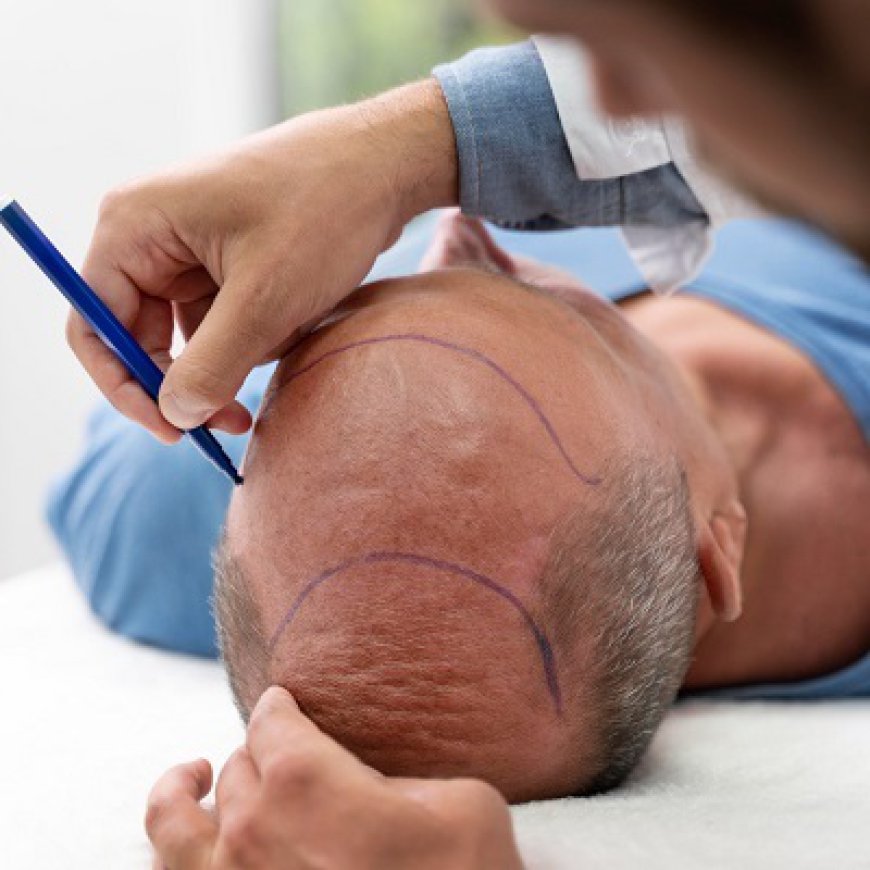What are the disadvantages of hair transplant?
Hair transplant procedures have gained immense popularity as a solution for hair loss, promising a natural-looking result and a permanent fix to thinning hair. However, like any medical procedure, hair transplants come with their own set of disadvantages. Understanding these drawbacks is crucial for anyone considering a hair transplant, particularly in places like Islamabad, where many clinics offer such services.

What are the Disadvantages of Hair Transplant?
Hair transplant procedures have gained immense popularity as a solution for hair loss, promising a natural-looking result and a permanent fix to thinning hair. However, like any medical procedure, hair transplants come with their own set of disadvantages. Understanding these drawbacks is crucial for anyone considering a hair transplant, particularly in places like Islamabad, where many clinics offer such services.
One of the primary disadvantages of hair transplants is the potential for complications during or after the procedure. While advancements in technology have made hair transplants safer, risks remain. Patients may experience infections, bleeding, and even scarring. The skill and experience of the surgeon play a critical role in minimizing these risks. Therefore, it's essential to choose a reputable clinic, such as those providing hair transplant in Islamabad, to reduce the likelihood of complications.
1. Cost Factors
Another significant disadvantage is the cost associated with hair transplants. These procedures can be quite expensive, often running into thousands of dollars, depending on the extent of the hair loss and the techniques used. For many individuals, this cost can be a significant financial burden. Additionally, since hair transplants are typically considered elective cosmetic procedures, they are often not covered by health insurance, further adding to the financial strain.
Patients must also factor in additional costs related to post-operative care and medications that may be necessary to promote healing and hair growth. While some clinics may offer financing options, the long-term financial commitment can still be daunting for many.
2. Limitations on Hair Density
While hair transplants can effectively restore hair to thinning or balding areas, they cannot create new hair follicles. The density of the hair in the transplanted area may not match the surrounding natural hair, leading to a less-than-optimal appearance. In some cases, patients may be disappointed with the results if they were expecting a full head of hair.
Moreover, the amount of donor hair available from the back or sides of the head limits the extent to which hair can be transplanted. If a patient has significant hair loss, they may not have enough donor hair for a successful transplant, potentially leading to a patchy or uneven appearance.
3. Recovery and Downtime
Recovery time is another important consideration when evaluating hair transplants. Although many patients can return to work within a few days, the full recovery process can take several weeks. During this time, swelling, redness, and discomfort may occur at the donor and recipient sites.
Additionally, the transplanted hair may fall out within the first few weeks after the procedure—a process known as "shock loss." This can be disheartening for patients who expect immediate results. It’s crucial to be patient, as new hair growth typically begins three to six months post-surgery, with the final results taking up to a year to fully materialize.
4. Aesthetic Concerns
Not all hair transplant procedures yield perfect results. Some patients may find that their hairline does not match their natural hairline, leading to an unnatural appearance. This is particularly true for those who undergo transplant procedures too early in their hair loss journey.
Inexperienced surgeons may not pay enough attention to the design of the hairline, resulting in an unnatural look. It’s vital for patients to have thorough consultations with their surgeons, discussing expectations and reviewing before-and-after photos of previous patients to get a better idea of potential outcomes.
5. Psychological Impact
The psychological impact of undergoing a hair transplant can also be a disadvantage. Patients often have high expectations for the results, and if the outcomes do not meet those expectations, it can lead to dissatisfaction and even depression.
Hair loss can already be a sensitive subject for many individuals, and adding the pressure of achieving a "perfect" result from a surgical procedure can exacerbate feelings of anxiety or disappointment. A solid support system and realistic expectations can help mitigate these concerns.
6. Long-Term Maintenance
Hair transplant results are not entirely maintenance-free. Patients may need to undergo additional procedures in the future, especially if they continue to lose hair. This ongoing commitment can add to the overall cost and may not be appealing to everyone.
Moreover, maintaining the health of the hair in the transplanted area requires a dedicated routine, including proper washing, conditioning, and potential use of topical products. Failure to maintain hair health can lead to subpar results over time.
Conclusion
While hair transplants offer an effective solution for hair loss, they are not without disadvantages. Factors such as cost, recovery time, aesthetic outcomes, and psychological impacts all play a role in the decision-making process. Individuals considering this procedure should weigh these disadvantages against the potential benefits. Consulting with experienced professionals at clinics like Royal Cosmetic Surgery in Islamabad can help individuals make informed decisions tailored to their unique circumstances.
In summary, understanding the drawbacks of hair transplants is crucial for anyone looking to regain their confidence and restore their hairline. Careful consideration and consultation with qualified professionals can lead to satisfactory results and a positive experience in the journey toward hair restoration.

 Sania
Sania